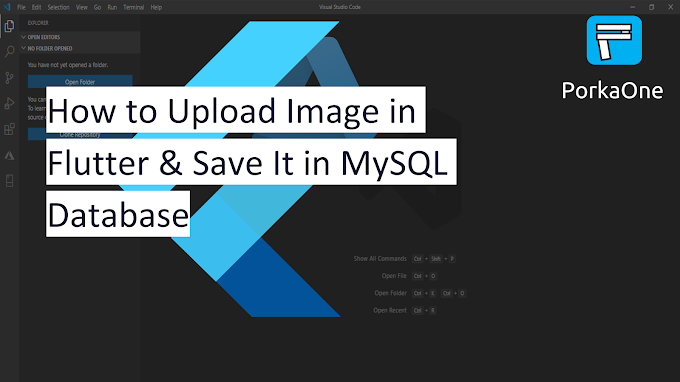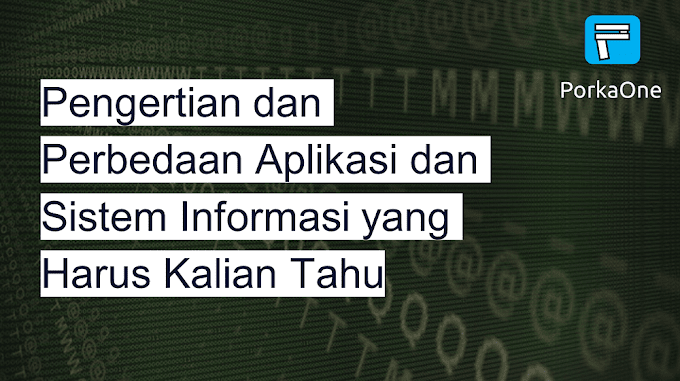We usually find the scroll button on very long website pages. This serves to
facilitate the user to the top of the screen. When you are reading a long text
on a website page, scrolling up with your finger, keyboard or mouse might be a
little tiring, but with the scroll button, you just click and the website will
automatically go to the top of the page.
This feature is quite useful on news websites or websites that contain a lot
of writing. This feature will improve the user experience (UX) and make users
more comfortable to return to the website that we have. Here's how to make a
scroll button on the website.
Easy Ways to Make Scroll Buttons on Websites with HTML and CSS
1. Create a new file named index.html. Then follow the script as below
<!DOCTYPE html>
<html lang="en">
<head>
<meta charset="UTF-8" />
<meta name="viewport" content="width=device-width, initial-scale=1.0" />
<meta http-equiv="X-UA-Compatible" content="ie=edge" />
<meta name="Description" content="Enter your description here" />
<link
rel="stylesheet"
href="https://cdnjs.cloudflare.com/ajax/libs/twitter-bootstrap/5.1.0/css/bootstrap.min.css"
/>
<link
rel="stylesheet"
href="https://cdnjs.cloudflare.com/ajax/libs/font-awesome/5.15.4/css/all.min.css"
/>
<title>Title</title>
<style>
/* button_scroll_up */
</style>
</head>
<body>
<div class="container mt-4">
<div class="alert alert-info">
<h3 class="text-center">
tutorial on how to make a button scroll up
</h3>
</div>
<p>
The standard Lorem Ipsum passage, used since the 1500s <br />
"Lorem ipsum dolor sit amet, consectetur adipiscing elit, sed do eiusmod
tempor incididunt ut labore et dolore magna aliqua. Ut enim ad minim
veniam, quis nostrud exercitation ullamco laboris nisi ut aliquip ex ea
commodo consequat. Duis aute irure dolor in reprehenderit in voluptate
velit esse cillum dolore eu fugiat nulla pariatur. Excepteur sint
occaecat cupidatat non proident, sunt in culpa qui officia deserunt
mollit anim id est laborum."
</p>
<p>
Section 1.10.32 of "de Finibus Bonorum et Malorum", written by Cicero in
45 BC <br />
"Sed ut perspiciatis unde omnis iste natus error sit voluptatem
accusantium doloremque laudantium, totam rem aperiam, eaque ipsa quae ab
illo inventore veritatis et quasi architecto beatae vitae dicta sunt
explicabo. Nemo enim ipsam voluptatem quia voluptas sit aspernatur aut
odit aut fugit, sed quia consequuntur magni dolores eos qui ratione
voluptatem sequi nesciunt. Neque porro quisquam est, qui dolorem ipsum
quia dolor sit amet, consectetur, adipisci velit, sed quia non numquam
eius modi tempora incidunt ut labore et dolore magnam aliquam quaerat
voluptatem. Ut enim ad minima veniam, quis nostrum exercitationem ullam
corporis suscipit laboriosam, nisi ut aliquid ex ea commodi consequatur?
Quis autem vel eum iure reprehenderit qui in ea voluptate velit esse
quam nihil molestiae consequatur, vel illum qui dolorem eum fugiat quo
voluptas nulla pariatur?"
</p>
<p>
1914 translation by H. Rackham <br />
"But I must explain to you how all this mistaken idea of denouncing
pleasure and praising pain was born and I will give you a complete
account of the system, and expound the actual teachings of the great
explorer of the truth, the master-builder of human happiness. No one
rejects, dislikes, or avoids pleasure itself, because it is pleasure,
but because those who do not know how to pursue pleasure rationally
encounter consequences that are extremely painful. Nor again is there
anyone who loves or pursues or desires to obtain pain of itself, because
it is pain, but because occasionally circumstances occur in which toil
and pain can procure him some great pleasure. To take a trivial example,
which of us ever undertakes laborious physical exercise, except to
obtain some advantage from it? But who has any right to find fault with
a man who chooses to enjoy a pleasure that has no annoying consequences,
or one who avoids a pain that produces no resultant pleasure?"
</p>
<p>
Section 1.10.33 of "de Finibus Bonorum et Malorum", written by Cicero in
45 BC <br />
"At vero eos et accusamus et iusto odio dignissimos ducimus qui
blanditiis praesentium voluptatum deleniti atque corrupti quos dolores
et quas molestias excepturi sint occaecati cupiditate non provident,
similique sunt in culpa qui officia deserunt mollitia animi, id est
laborum et dolorum fuga. Et harum quidem rerum facilis est et expedita
distinctio. Nam libero tempore, cum soluta nobis est eligendi optio
cumque nihil impedit quo minus id quod maxime placeat facere possimus,
omnis voluptas assumenda est, omnis dolor repellendus. Temporibus autem
quibusdam et aut officiis debitis aut rerum necessitatibus saepe eveniet
ut et voluptates repudiandae sint et molestiae non recusandae. Itaque
earum rerum hic tenetur a sapiente delectus, ut aut reiciendis
voluptatibus maiores alias consequatur aut perferendis doloribus
asperiores repellat."
</p>
<p>
1914 translation by H. Rackham <br />
"On the other hand, we denounce with righteous indignation and dislike
men who are so beguiled and demoralized by the charms of pleasure of the
moment, so blinded by desire, that they cannot foresee the pain and
trouble that are bound to ensue; and equal blame belongs to those who
fail in their duty through weakness of will, which is the same as saying
through shrinking from toil and pain. These cases are perfectly simple
and easy to distinguish. In a free hour, when our power of choice is
untrammelled and when nothing prevents our being able to do what we like
best, every pleasure is to be welcomed and every pain avoided. But in
certain circumstances and owing to the claims of duty or the obligations
of business it will frequently occur that pleasures have to be
repudiated and annoyances accepted. The wise man therefore always holds
in these matters to this principle of selection: he rejects pleasures to
secure other greater pleasures, or else he endures pains to avoid worse
pains."
</p>
</div>
<!-- button scroll section -->
</body>
</html>When executed, the display will look like the image below. Here we have not added a scroll button. We will discuss it at a later stage.

|
| Halaman tanpa button scroll |
2. Add the script below below the sign <!-- button scroll section -->.
<a href="#" class="up-icon"><i class="fas fa-chevron-circle-up"></i></a>
3. Add the script below under the /* button_scroll_up */ to style the button.
.up-icon {
position: fixed;
width: 50px;
height: 50px;
border-radius: 50%;
background: rgba(192, 192, 192, 0.3);
bottom: 40px;
right: 50px;
text-decoration: none;
text-align: center;
line-height: 50px;
/* color: #ffffff; */
}
.fa-chevron-circle-up{font-size: 30px;line-height: 50px;color:#01daec;}
4. Please run it again in the browser, then the result will look like the image below. There is a button in the bottom right corner of the page.
Here is the complete script from the steps we have gone through above.
<!DOCTYPE html>
<html lang="en">
<head>
<meta charset="UTF-8" />
<meta name="viewport" content="width=device-width, initial-scale=1.0" />
<meta http-equiv="X-UA-Compatible" content="ie=edge" />
<meta name="Description" content="Enter your description here" />
<link
rel="stylesheet"
href="https://cdnjs.cloudflare.com/ajax/libs/twitter-bootstrap/5.1.0/css/bootstrap.min.css"
/>
<link
rel="stylesheet"
href="https://cdnjs.cloudflare.com/ajax/libs/font-awesome/5.15.4/css/all.min.css"
/>
<title>Title</title>
<style>
/* button_scroll_up */
.up-icon {
position: fixed;
width: 50px;
height: 50px;
border-radius: 50%;
background: rgba(192, 192, 192, 0.3);
bottom: 40px;
right: 50px;
text-decoration: none;
text-align: center;
line-height: 50px;
/* color: #ffffff; */
}
.fa-chevron-circle-up{font-size: 30px;line-height: 50px;color:#01daec;}
</style>
</head>
<body>
<div class="container mt-4">
<div class="alert alert-info">
<h3 class="text-center">
tutorial on how to make a button scroll up
</h3>
</div>
<p>
The standard Lorem Ipsum passage, used since the 1500s <br />
"Lorem ipsum dolor sit amet, consectetur adipiscing elit, sed do eiusmod
tempor incididunt ut labore et dolore magna aliqua. Ut enim ad minim
veniam, quis nostrud exercitation ullamco laboris nisi ut aliquip ex ea
commodo consequat. Duis aute irure dolor in reprehenderit in voluptate
velit esse cillum dolore eu fugiat nulla pariatur. Excepteur sint
occaecat cupidatat non proident, sunt in culpa qui officia deserunt
mollit anim id est laborum."
</p>
<p>
Section 1.10.32 of "de Finibus Bonorum et Malorum", written by Cicero in
45 BC <br />
"Sed ut perspiciatis unde omnis iste natus error sit voluptatem
accusantium doloremque laudantium, totam rem aperiam, eaque ipsa quae ab
illo inventore veritatis et quasi architecto beatae vitae dicta sunt
explicabo. Nemo enim ipsam voluptatem quia voluptas sit aspernatur aut
odit aut fugit, sed quia consequuntur magni dolores eos qui ratione
voluptatem sequi nesciunt. Neque porro quisquam est, qui dolorem ipsum
quia dolor sit amet, consectetur, adipisci velit, sed quia non numquam
eius modi tempora incidunt ut labore et dolore magnam aliquam quaerat
voluptatem. Ut enim ad minima veniam, quis nostrum exercitationem ullam
corporis suscipit laboriosam, nisi ut aliquid ex ea commodi consequatur?
Quis autem vel eum iure reprehenderit qui in ea voluptate velit esse
quam nihil molestiae consequatur, vel illum qui dolorem eum fugiat quo
voluptas nulla pariatur?"
</p>
<p>
1914 translation by H. Rackham <br />
"But I must explain to you how all this mistaken idea of denouncing
pleasure and praising pain was born and I will give you a complete
account of the system, and expound the actual teachings of the great
explorer of the truth, the master-builder of human happiness. No one
rejects, dislikes, or avoids pleasure itself, because it is pleasure,
but because those who do not know how to pursue pleasure rationally
encounter consequences that are extremely painful. Nor again is there
anyone who loves or pursues or desires to obtain pain of itself, because
it is pain, but because occasionally circumstances occur in which toil
and pain can procure him some great pleasure. To take a trivial example,
which of us ever undertakes laborious physical exercise, except to
obtain some advantage from it? But who has any right to find fault with
a man who chooses to enjoy a pleasure that has no annoying consequences,
or one who avoids a pain that produces no resultant pleasure?"
</p>
<p>
Section 1.10.33 of "de Finibus Bonorum et Malorum", written by Cicero in
45 BC <br />
"At vero eos et accusamus et iusto odio dignissimos ducimus qui
blanditiis praesentium voluptatum deleniti atque corrupti quos dolores
et quas molestias excepturi sint occaecati cupiditate non provident,
similique sunt in culpa qui officia deserunt mollitia animi, id est
laborum et dolorum fuga. Et harum quidem rerum facilis est et expedita
distinctio. Nam libero tempore, cum soluta nobis est eligendi optio
cumque nihil impedit quo minus id quod maxime placeat facere possimus,
omnis voluptas assumenda est, omnis dolor repellendus. Temporibus autem
quibusdam et aut officiis debitis aut rerum necessitatibus saepe eveniet
ut et voluptates repudiandae sint et molestiae non recusandae. Itaque
earum rerum hic tenetur a sapiente delectus, ut aut reiciendis
voluptatibus maiores alias consequatur aut perferendis doloribus
asperiores repellat."
</p>
<p>
1914 translation by H. Rackham <br />
"On the other hand, we denounce with righteous indignation and dislike
men who are so beguiled and demoralized by the charms of pleasure of the
moment, so blinded by desire, that they cannot foresee the pain and
trouble that are bound to ensue; and equal blame belongs to those who
fail in their duty through weakness of will, which is the same as saying
through shrinking from toil and pain. These cases are perfectly simple
and easy to distinguish. In a free hour, when our power of choice is
untrammelled and when nothing prevents our being able to do what we like
best, every pleasure is to be welcomed and every pain avoided. But in
certain circumstances and owing to the claims of duty or the obligations
of business it will frequently occur that pleasures have to be
repudiated and annoyances accepted. The wise man therefore always holds
in these matters to this principle of selection: he rejects pleasures to
secure other greater pleasures, or else he endures pains to avoid worse
pains."
</p>
</div>
<!-- button scroll section -->
<a href="#" class="up-icon"><i class="fas fa-chevron-circle-up"></i></a>
</body>
</html>
That's all for our tutorial this time about how to easily make a button
scroll up with HTML and CSS. Hopefully this short article is useful and can
be implemented. If you have questions, please ask directly in the comments
column below. That is all and thank you.








0 Comments
Come on ask us and let's discuss together
Emoji